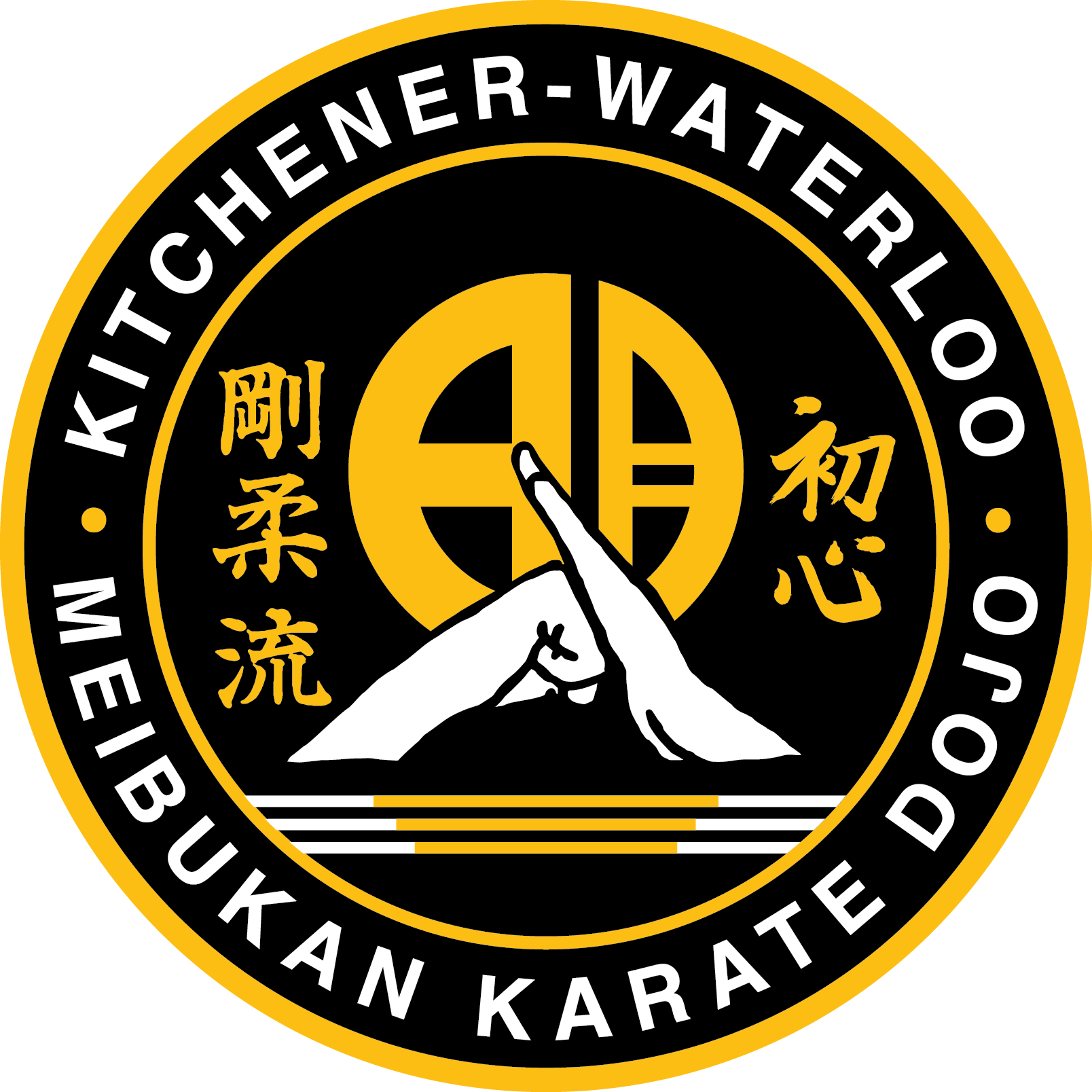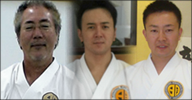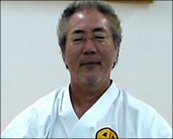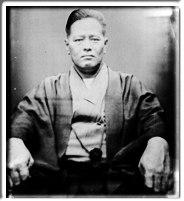
Kitchener-Waterloo Meibukan Karate Dojo


History
|
HISTORY In 1392 36 families from China immigrate to Kume village in Naha, Okinawa. Chinese Boxing is practiced. In 1477 the three kingdoms of Okinawa are unified, and the ruler King Sho Shin bans the use of weapons. In 1609, the Satsuma clan of Japan invades Okinawa. In 1888, Grand Master Sensei Chojun Miyagi is born. He is the founder of Gojyu-Ryu. In 1912, Dai Sensei Meitoku Yagi is born. In 1930, Chojun Miyagi names the style. In 1952, Sensei Meitoku Yagi is given permission to open a Dojo. He is the only student of Sensei Chojun Miyagi to be allowed to, as Sensei Chojun Miyagi dies on October 8th, 1953. In 1963, the family of Sensei Chojun Miyagi officially appoints Sensei Meitoku Yagi as successor of Okinawan Gojyu-Ryu. Dai Sensei is given his Masters Gi and Obi. From 1976 to 1991, all of the Meibu-ken katas are created and introduced. In 1996, Dai Sensei celebrates his 85th birthday. 1998 was the 110th anniversary of the birth of Gojyu-ryu founder Sensei Chojun Miyagi. On Febuary 7th, 2003, Master Meitoku Yagi passes away. The history of Gojyu-Ryu begins in the mid eighteen hundreds with Kanryo Higaonna. Higaonna Kanryo traveled to China to study kempo and returned to Okinawa to integrate it into the Okinawan art of Naha-te. The founder of the Gojyu-Ryu karate, Miyagi Chojun Sensei, was a student of Kanryo Higaonna Sensei. At the age of 14, Miyagi Chojun Sensei met Kanryo Higaonna Sensei. They spent thirteen years together until Kanryo Higaonna Sensei passed away in 1916. In addition to his personal training and development of Naha-te, Miyagi Chojun Sensei spent a great deal of his time promoting the art. In 1921, he performed a demonstration of Naha-te in Okinawa for the visiting Prince Hirohito, Emperor of Japan, and in 1925 for Prince Chichibu. Miyagi chojun Sensei had already envisioned the development of Naha-te not only in Japan but also around the world. It became increasingly important to organize and unify Okinawan karate as a cultural treasure to be passed on to future generations. In 1926, Miyagi Chojun Sensei established the Karate Research Club in Wakas-Cho. Miyagi Chojun Sensei chose to name the style that he was promoting. It became known as Gojyu-Ryu Karate, meaning hard and soft, taken from the precepts of traditional Chinese Kempo. He was the first among different schools of karate to name his art and in 1933 his art of Gojyu-Ryu was formally registered at the Butoku-kai, Japanese Martial Arts Association. Miyagi Chojun Sensei chose the name Gojyu-Ryu from the Eight Precepts of traditional Chinese Kempo found in the document Bubishi. The precepts are:
Master Meitatsu Yagi is the eldest son of the late Grand Master Meitoku Yagi, tutored directly by the Grand Master himself to carry on the legacy of Meibukan Gojyu-Ryu Karate.Master Yagi has lived, worked, initiated new dojos and taught Meibukan in several places outside of Okinawa and around the world. Master Yagi lived in the US from 1964 to 1970; in Guam 1971 to 1975; in Saipan 1995 to 1997 and in the Philippines 1997 to 1998. After returning from Guam in 1975, Master Meitatsu Yagi was given the title of Renshi 6th Dan and became a Director of All Okinawan Karate-Do Association in 1976. In 1976, he was given the teaching responsibilities at the Hombu Dojo in Okinawa as President of Gojyu-Ryu Meibu-kai with Sensei Meitetsu Yagi (his younger brother) as Vice-President and Grand Master Meitoku Yagi as Chairman / Consultant. From the Grand Master, Sensei Meitatsu Yagi was charged with the responsibility of teaching all of the senior Meibukan Gojyu-Ryu teachers in Okinawa. Grand Master Meitoku Yagi chose his eldest son Master Meitatsu Yagi to be the first to learn all facets of Meibukan Gojyu-Ryu. These forms are an integral part of Meibukan Gojyu-Ryu. Master Meitatsu Yagi was a director of the All Okinawa Karate-Do Gojyu-Kai for 20 years. He served a two year term as President of the Okinawan Karate-Do Gojyu-Kai in 1987 as well as President of the Hombu Dojo in Kume. Ensuring that his successor be Master Meitatsu Yagi, Dai Sensei Meitoku Yagi gave Master Meitatsu Yagi the title of Hanshi Judan, Okinawa Karate-Do Gojyu-Kai in 1997. During his lifetime, Grand Master Meitoku Yagi presented only one Hanshi Judan and this was to his eldest son and heir, Master Meitatsu Yagi. To this day, Sensei Meitatsu Yagi, travels the world meeting and teaching hundreds of people each year in seminars in India, Canada, Israel, Italy, the USA, England and France as well as South America. This was the legacy that he was given by the Grand Master. Master Meitatsu Yagi has also been very active in promoting and developing The Okinawa Traditional Karatedo Kobudo International Studying Center in Yomitan Village, Okinawa. As Master of Meibukan Gojyu-Ryu, he is working with Master Kenyu Chinen of Shorin-Ryu style and Master Yasuo Shimoji of Uechi-Ryu style. All three masters are traditional Okinawan teachers and are working together to promote Okinawa Traditional Karate-Do and Kobudo in Okinawa and around the world. The founder of Gojyu-Ryu Karate, Chojun Miyagi Sensei, chose the young master Meitoku Yagi to be the first and only person to learn all of the Gojyu-Ryu kata directly from him. Being the direct recipient from the Grand Master, he helped develop and teach all the Meibukan Kata, Renzoku Kumite, Kakomi Kumite, Meibukan Bo, Meibukan Sai, Nihon Kumite, Renzoku and Kakomi forms.
Martial Training Philosophy
The spirit of traditional karate can be summarized in the final written words of the founder of Okinawa Gojyu karate, Master Chojun Miyagi, (1888-1953). “ Do not be struck by others. Do not strike others. The principle is peace without incident”. While karate does indeed foster physical fitness, it is also about character development. The balance sought through training and physical conditioning as well as through the exploration of martial philosophy, results in a richer life through deeper understanding of the self. Through the pursuit and spirit of martial arts, one makes a choice to forge a steadfast and principled philosophy of life, establish a peace-oriented view of the world, cultivate physical strength, learn the values of courtesy and patience, and pave the way for international friendship. The attitude of “Karate ni Sente ni Hanshi” – “there is no first attack in karate” is instilled from the beginning, which is contrary to the philosophy of free sparring or fighting. In the current fighting arts such as the Mixed Martial Arts (MMA) and Ultimate Fighting Championships (UFC), if you lose a rule-based submission style fight, you can train for another month or another year and maybe win your next match. In traditional karate, you train for a real live self-defense situation where you have only the moment. There is no second chance; either you are injured (sometimes critically) or you call upon your training and defeat your attacker.
Brief history of Okinawan KarateWhen looking at the development of the traditional Okinawan styles of Karate, we can gain a valuable insight into the art by illuminating some of the surrounding influences that played a significant part in shaping the culture of the Okinawan people. Okinawa,is a small island off of the southern tip of Japan. Te was practised through out the land. In 1392, 36 families from China immigrated to Kume village in Naha, Okinawa. Each of these families were specialized in such a way as to cultivate the development of this tiny island. As they settled and their culture combined with the people of Okinawa, a new culture was born. The Okinawans, or Uchinanchu, grew into a courteous and peaceful race, distinct from both China and Japan. The settling of these families is undoubtedly how the Chinese fighting traditions were initially transmitted to Okinawa. Dai Sensei Meitoku Yagi can actually trace back his family's ancestral roots to this Kume settlement. In 1609, the members of the Satsuma Clan invaded and conquered Okinawa for the Japanese empire. After this time, a ban on the possession of weapons by the Okinawan people was put into effect. This did a lot to encourage the development of an unarmed fighting art in Okinawa, which eventually turned into the different styles of traditional Karate we see today. However, since the Satsuma also banned martial arts training, students had to train in secret, often in the middle of the night in the back yards of their Sensei's home. The Satsuma military occupation lasted nearly three centuries until 1879, when Okinawa became an official part of the Japanese empire. With time, Karate became a more openly practiced art. It martial arts were introduced into the island's school system as a form of physical exercise, due to the influence of Karate enthusiasts led by Itosu Anko. The Japanese felt that young men who acquired healthy bodies and good moral character through martial arts training would be more productive in the Japanese military culture.
|
© 2015 Kitchener Waterloo Meibukan Karate Dojo

